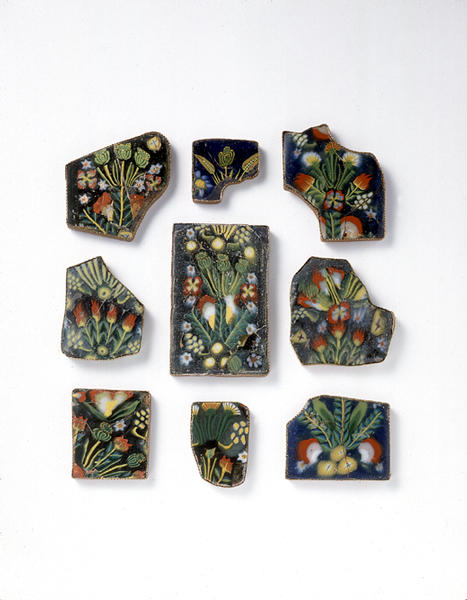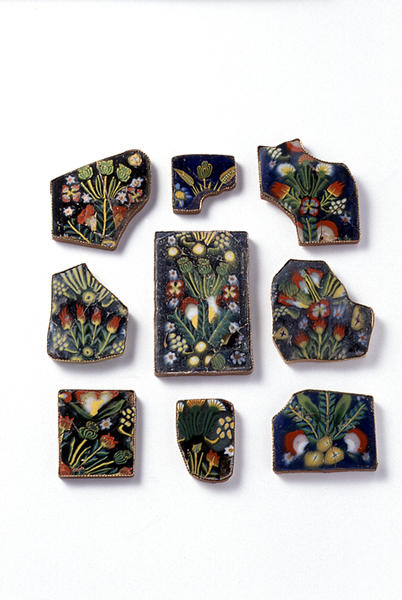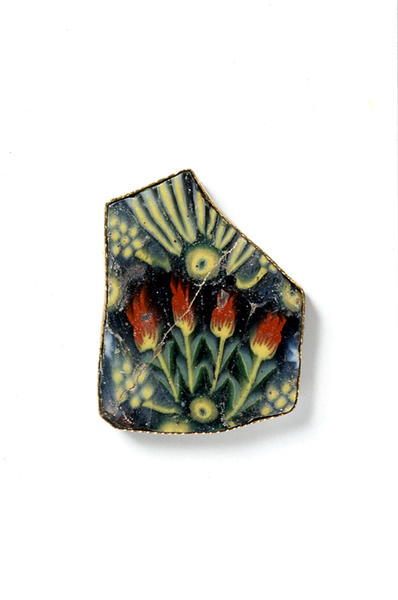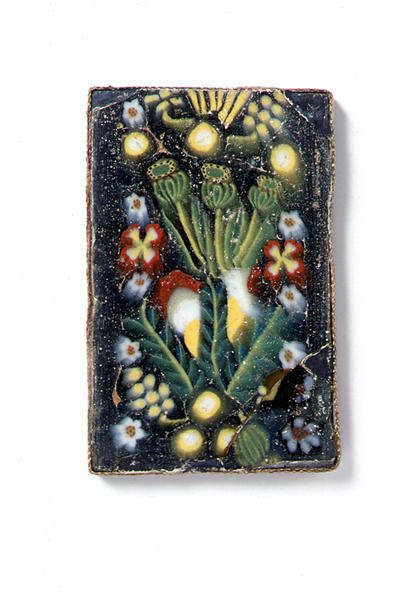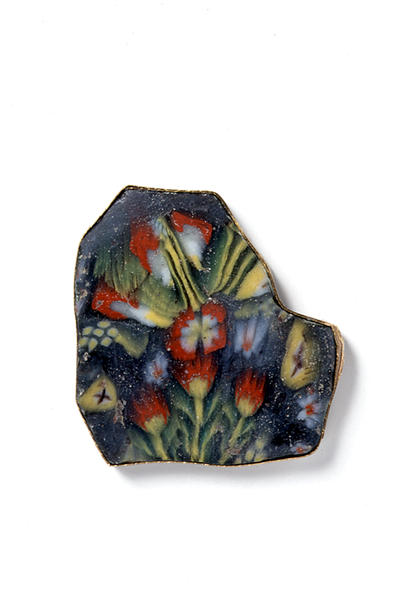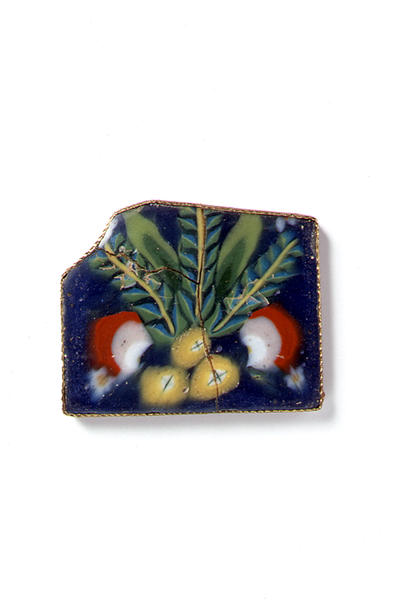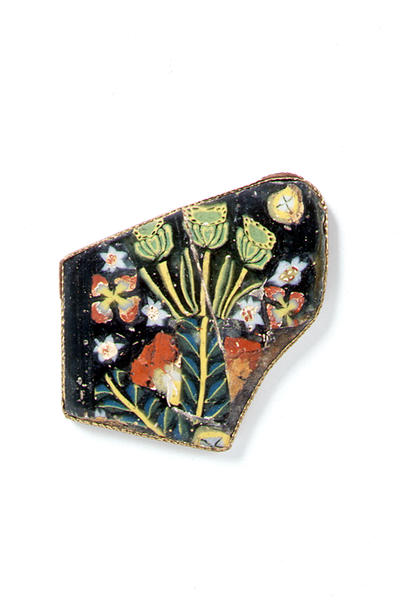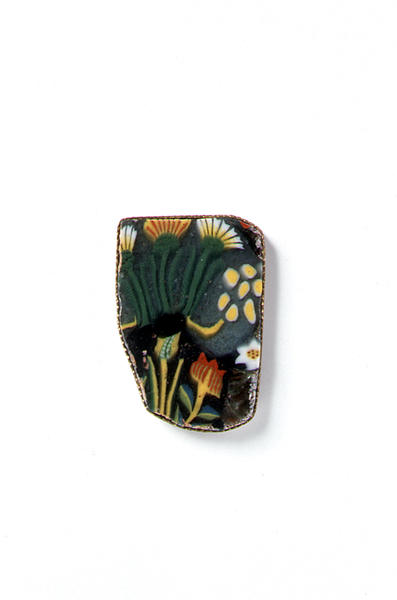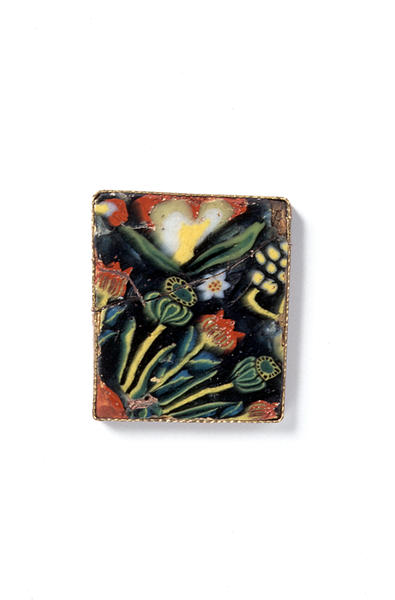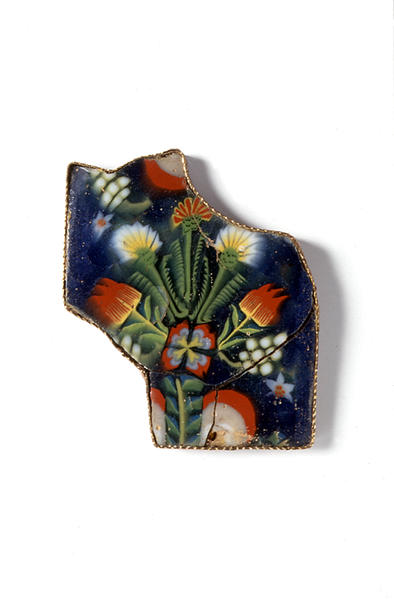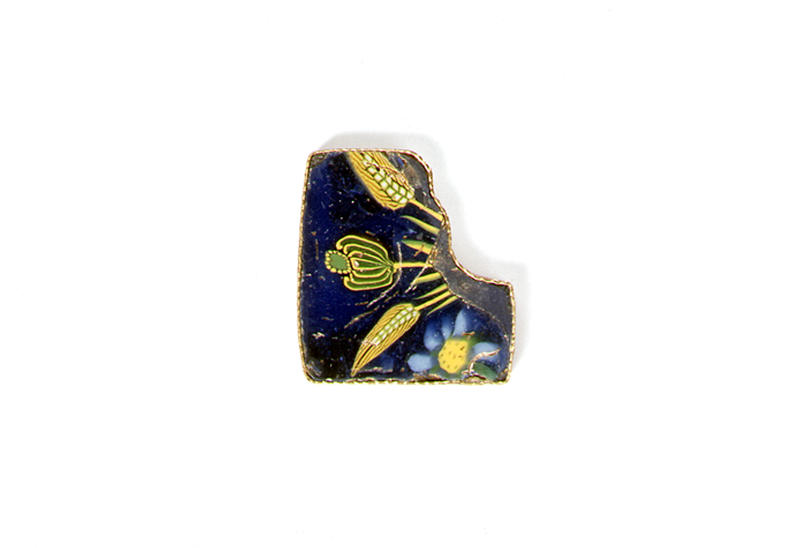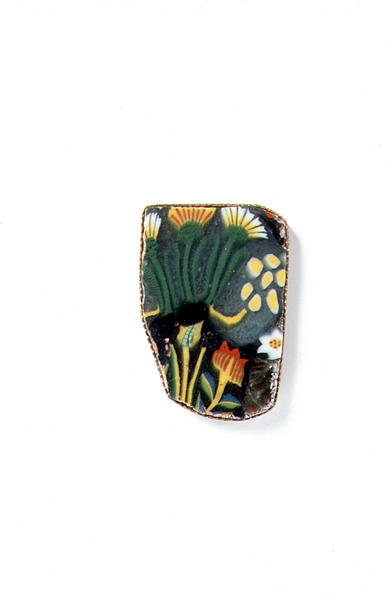Decorative Plaques with Floral Motifs
- Egypt
- 1st century B.C. - 1st century A.D.
- Glass
Catalogue Entry
Decorative plaques with brightly colored vegetation motifs. There are narcissus-like flowers, tulips, wheat and others for a total of 12 different plant motifs. The flowers and their leaves are made out of mosaic glass in a vivid array of red, yellow, white, green, and pale blue, all embedded into a ground of cobalt or grayish green glass and then fired together. There is one example which shows both sides framed in rod glass that is the same color as the ground glass, and this long rectangular shaped form was 6.0 to 6.5cm in width. Each motif is arranged in right-left symmetry in a combined floral design which is then repeated vertically. Because the ground glass is transparent, the sides of the flower leaves and pistils show through the clear ground glass and this gives the image surface a sense of depth. These decorative panels can be divided into two groups by ground color, those with cobalt ground glass and those with ash green ground color, with the cobalt group more finely formed. The surfaces of these panels are either flat or slightly raised, and smoothly polished, but the backs of many of the panels show bits of glass which were attached to the panels and are thus not perfectly finished. While the purpose of these panels is not clear, given their size they may have been used as decorative tiles on either the walls of temples. Excavated examples of this type of decorative panels mainly have been found in Middle Egypt. They were extremely popular in Egypt from the Ptolemaic period through the beginning of the Imperial Roman period, and these floral motif panels are one of the supreme achievements of the decorative mosaic glass works which show extremely high levels of formative technique and beauty.
